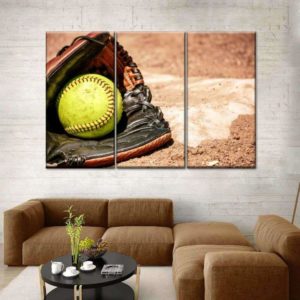 The furniture in classic British design presents its unique story and appeal. One such piece that has stood the test of time is the Chesterfield chair. It is characterized by its deep button tufting, rolled arms, and equally high back. This beauty tells a timeless tale of luxury and comfort.
The furniture in classic British design presents its unique story and appeal. One such piece that has stood the test of time is the Chesterfield chair. It is characterized by its deep button tufting, rolled arms, and equally high back. This beauty tells a timeless tale of luxury and comfort.
This article shines a light on the Chesterfield chair, its history, its significance in British design, and its contemporary adaptations. Let’s dive deep into the classic elegance of the Chesterfield chair.
History of the Chesterfield Chair
Originating in the 18th century, the Chesterfield chair is steeped in intriguing history. It is believed to have been commissioned by the Fourth Earl of Chesterfield – Philip Stanhope. He desired a piece of furniture that offered comfort without wrinkling his clothes.
The Chesterfield quickly gained popularity among the British elite and became a symbol of wealth and social status. Aristocrats, businessmen, and high-ranking officials all wanted to display these chairs in their homes as a testament to their taste and class. For centuries, the Chesterfield remained a staple of the British aristocracy.
In the 19th century, the design was further popularized when it became a frequent feature in gentlemen’s clubs, libraries, and university common rooms. The robust and sturdy nature of the Chesterfield chair made it a preferred choice in these settings.
Notable Characteristics of a Chesterfield Chair
-
Deep Button Tufting
This is arguably the most defining feature of a Chesterfield chair. Deep button tufting contributes immensely to its classic aesthetic. Beyond its visual appeal, this intricate detail serves a practical function. The tufting holds the padding in place, improving the chair’s durability by preventing the material from shifting over time. This means that the chair can retain its distinctive shape for years.
-
Rolled Arms
Another Chesterfield chair hallmark is its rolled arms, designed at the same height as the back. This characteristic isn’t merely for aesthetics—it offers optimal comfort for users. The rolled arms and equal-height back provide an inviting posture. They invite one to lean back and enjoy the chair’s enveloping comfort.
-
Leather Upholstery
Chesterfields traditionally flaunt high-quality leather upholstery. This feature adds an extra layer of luxury and sophistication to the chair. The leather, usually dyed in rich hues like oxblood or brown, enhances Chesterfield’s regal aesthetic. It’s worth noting that while leather remains a popular choice. Plus, contemporary adaptations of Chesterfields have also embraced a range of other fabrics.
The Chesterfield Chair in British Design
The Chesterfield chair has been an enduring symbol of British design since its inception. Its enduring appeal lies not only in its aesthetic value but also in what it represents – an embodiment of British craftsmanship and attention to detail.
British design is synonymous with a balance of tradition and innovation, a quality represented by the Chesterfield. While it retains the classic elements that have made it iconic, the chair has also been reinterpreted over the years to meet contemporary tastes.
The chair encapsulates British design’s commitment to durability and quality. The robust structure of the Chesterfield, coupled with the meticulous craftsmanship that goes into its production, speaks volumes about the high standards of British furniture manufacturing.
Chesterfield’s timeless appeal has also ensured its presence in a variety of settings. From traditional British homes to modern city apartments, and professional offices to high-end boutiques, the Chesterfield chair adds a touch of elegance wherever it is placed.
Modern Interpretations of the Chesterfield Chair
The Chesterfield chair’s timeless design has made it a favorite among contemporary furniture designers. While its key characteristics remain, modern interpretations have introduced fresh adaptations.
Contemporary Chesterfields may be upholstered in a variety of materials, from velvet to linen, in an array of colors that extend beyond traditional deep hues. The button tufting, too, has seen varied applications, from subtle impressions to prominent detailing.
Another evolution in modern Chesterfield design is the introduction of sectional Chesterfields. These pieces retain the classic Chesterfield elements while providing the space and comfort of a modern sectional sofa. These characteristics prove the design’s versatility.
In spite of these modifications, the modern Chesterfield continues to uphold the ethos of its traditional counterpart. It offers comfort and luxury while standing as a testament to fine craftsmanship.
The Chesterfield Chair’s Influence Globally
The Chesterfield chair’s timeless design and iconic status have seen it transcend the bounds of Britain, influencing global interior design trends. Its robust construction, comfort, and elegant aesthetic have won it fans worldwide. That is why it is a popular choice in homes, offices, and commercial spaces across continents.
In America, the Chesterfield chair became synonymous with a sense of aristocratic sophistication, finding its place in upscale homes and offices. In Europe, the chair’s aesthetic versatility saw it incorporated into various design styles, from classic to contemporary.
Even in Asia, where design sensibilities differ significantly from the West, Chesterfield’s universal appeal resonated. It has been adapted to suit local tastes without losing its quintessential feature.
Conclusion
The Chesterfield chair, a quintessential piece of British design, has maintained its allure for centuries. Its distinguished design and enduring comfort make it more than a chair—it’s a symbol of refined taste, sophistication, and craftsmanship. Its historical roots in the British aristocracy and its adaptation to contemporary design preferences underscore its versatility and timeless appeal.
Today, the Chesterfield chair graces not only traditional spaces but also the most modern settings, attesting to its adaptability. It continues to inspire designers worldwide and is cherished by those who appreciate the fusion of tradition, quality, and style.


